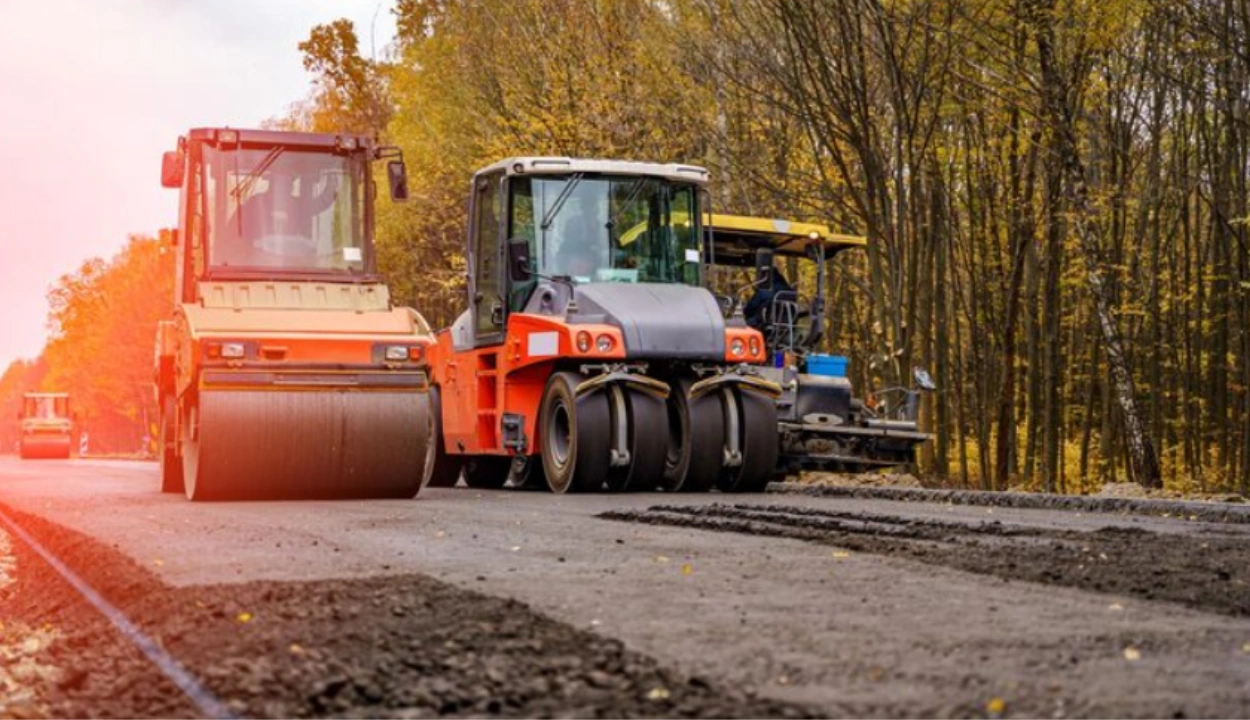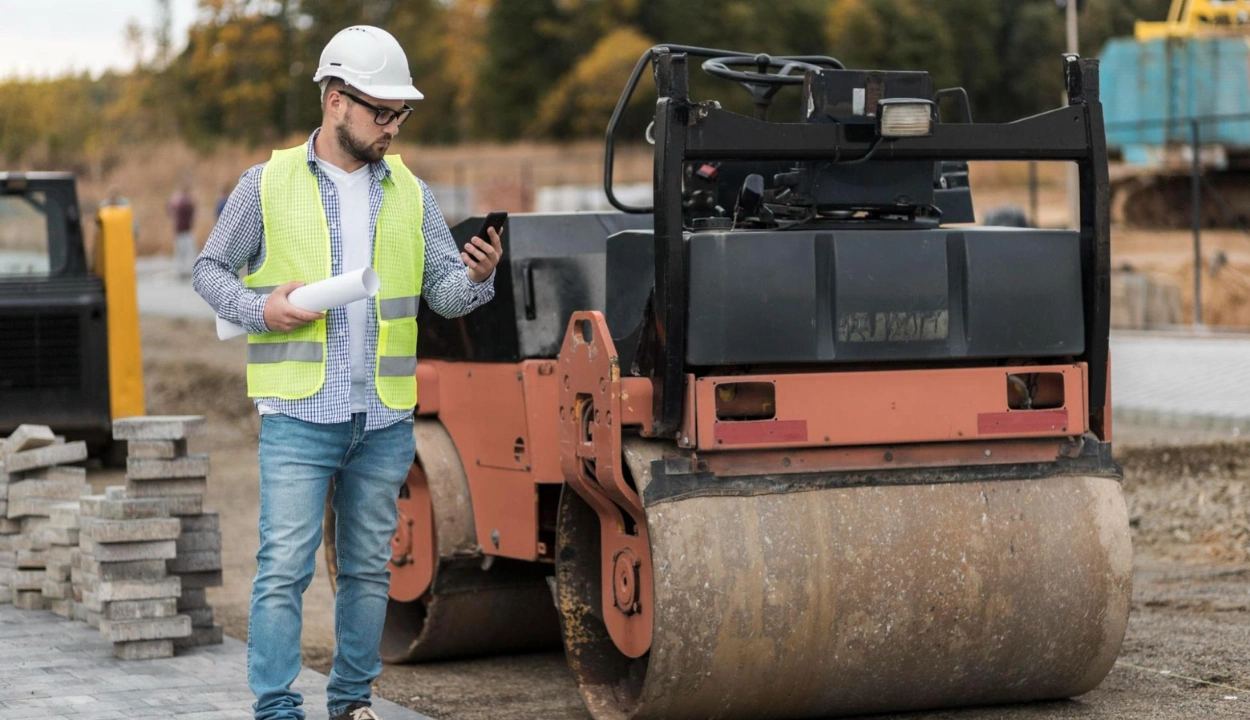How Equipment Management Software Enhances Safety on Construction Sites
Safety is vital at construction sites, which are hazardous due to heavy machinery and electrical equipment use.
Construction workers are exposed to several safety risks, from falling off equipment, running the risk of electrocution, or even exposure to hazardous materials.
Maintaining safety on the construction site ensures that your project operates smoothly and gives timely results.
Construction equipment management software allows construction and project managers to manage the safety of their sites by providing them with tools to mitigate any risks and improve operational safety.
In this blog, we will explore how equipment management software can enhance safety on construction sites and examine some safety and implementation issues that can arise.
What are the Current Safety Challenges in Construction Sites?

The current safety hazards on construction sites are severe and should be investigated to ensure safety throughout the project.
Some of the critical safety challenges that construction sites face include:
Electrical Issues
Construction sites are prone to electrical accidents and electrocutions due to the mirage of naked wires and electrical equipment that the workers have to handle.
To ensure the safety of the workers, you must ensure that all the electrical equipment and wires are appropriately handled and comply with the safety regulations.
This will help ensure your workers' safety and your site's compliance with safety regulations.
Airborne Toxins and Fibers
Workers at a construction site are exposed to airborne fibers and toxins like wood dust and chemicals that can, over time, lead to the workers developing respiratory issues.
Some of these can include occupational asthma, lung cancer, and COPD.
To tackle this issue, construction and project managers must ensure that the workers have the proper safety gear when working with these toxins and fibers to minimize their impact on their health.
Moving Objects
Since construction sites use much heavy equipment, workers move about to finish the job.
The machinery can cause workers to be injured or harmed.
To resolve this issue, ensure your site is never cluttered or untidy.
This will help you minimize the risk of workplace injuries by giving the workers and machinery an adequate area to work in.
Asbestos
Asbestos is a naturally occurring silicate mineral used in construction.
It is helpful in construction projects but fatal for workers since inhaling the fibers can cause inflammation and scarring.
High Turnover
Since construction can be a tedious and physically challenging field, the industry has a high turnover rate.
It causes safety issues as many workers, due to the turnover rates, need to be appropriately trained and can get into workplace-related accidents easily.
To combat this issue, project managers and contractors must place the new hires under more experienced workers who can teach them how to do their jobs properly to minimize accident risks.
Communication Issues
Communication in any workplace can lead to a better understanding of systems and, subsequently, accidents.
These accidents can sometimes be fatal, especially in high-risk areas like construction sites.
To ensure the safety of your workers, you have to ensure that all lines of communication are always open and transparent and that the workers have a clear set of instructions and guidance.
Environmental Hazards
Although unavoidable environmental hazards like changing weather or storms can cause accidents and safety issues in construction sites.
That is why project managers must plan for unexpected issues and train the workers on the protocols to follow under these conditions.
Mental Health Issues
Stress, Anxiety, and compliance sometimes affect workers' ability to follow training and guidelines.
To prevent this from happening on your construction site, try to maintain decorum in the workplace and give the workers the leeway to relax and work at their own pace.
What is Construction Equipment Management Software?
Construction equipment management software helps companies stay organized and ensure equipment is ready for use.
It tracks equipment locations, usage, and performance, making it easier to manage resources across multiple job sites.
With real-time updates, it improves decision-making and helps prevent delays, keeping projects on track and reducing costs.
How Equipment Management Software Can Help Prioritize Safety in Construction Sites

Implementing equipment management software to your construction project can be a game-changer in enhancing the safety of your site.
Some of the ways an EMS can help improve safety on your site include:
Preventive Maintenance Scheduling
Importance of Regular Maintenance for Equipment Safety
- Regular maintenance can help project managers ensure that the equipment is up to code and help them determine when the repair is needed.
- Regular maintenance helps prevent breakdowns and saves workers due to risks and preventable accidents.
- Proper maintenance helps prolong the lifespan of machinery and helps the project managers determine which equipment needs repair and which needs retirement.
How Software Automates Maintenance Scheduling and Alerts
- Equipment management software automates your scheduling, allowing you to perform maintenance tasks based on the manufacturer's requirements and recommendations.
- An EMS sends automated alerts and notifications to maintenance personnel and project managers about when maintenance tasks are due. It helps with timely servicing and inspections.
- EMS allows project managers to access previous maintenance data for auditory requirements. They also help maintain data for compliance purposes.
Equipment Tracking and Monitoring
Real-time Location Tracking of Equipment and Personnel
- An EMS utilizes advanced tools like GPS tracking to give project managers real-time visibility and control over the location of the equipment and personnel.
- Project managers can monitor the movement and the usage of the equipment remotely without having to move. It ensures efficient allocation and usage across the site.
- Real-time tracking enhances the site's safety by enabling location identification in case of emergencies and incidents. It facilitates prompt response and assistance.
Geofencing and Boundary Alerts for Restricted Zones
- Geofencing features allow the construction companies to define the boundaries and zones within the job site.
- EMS triggers alerts and notifications in case equipment enters restricted areas or is out of their designated areas, thus saving the project managers the risk of incidents.
- You can enforce safety protocols, prevent unauthorized access, and mitigate the risks of accidents by implementing geofencing in your job sites.
Compliance Management
Ensuring Adherence to Safety Regulations and Standards
- EMS assists construction companies in complying with compliance and safety regulations. These compliances can include the OSHA requirements or industry-based guidelines.
- With an EMS, you can automate compliance tasks such as safety instructions and inspections, equipment certifications, and documentation.
- EMS facilitates audits and reporting by providing you access to compliance-related data and records.
Generating Reports for Regulatory Inspections
- You can generate comprehensive reports on equipment maintenance, safety inspections, incident logs, and regulatory compliance statuses.
- An EMS allows you to customize your reports to meet specific regulatory requirements, which simplifies the process of regulatory inspections and audits.
- Construction companies can showcase their commitment to safety and regulatory compliance by maintaining up-to-date and accurate records.
Data Analytics and Predictive Maintenance
Utilizing Data to Identify Potential Safety Risks
- An EMS collects and analyzes the data on your equipment usage, performance, and maintenance history to identify patterns or safety risks.
- Advanced analytics tools help you proactively assess risk and identify safety risks. It enables you to manage and maintain your equipment before serious issues arise.
- Using data insights, project managers can implement safety measures and interventions in targeted areas to prevent accidents and risks, thus increasing the site's overall safety performance.
Predictive Maintenance to Prevent Equipment Failures
- An EMS provides predictive maintenance algorithms that can be analyzed to point out and forecast potential failures or maintenance needs.
- By predicting equipment failures in advance, construction companies can schedule maintenance activities and plan their downtime without disrupting the project schedule.
- Predictive maintenance reduces the likelihood of unexpected equipment breakdowns or malfunctions, posing safety hazards to workers and disrupting project operations.
Additionally
- EMS software can help manage the inventory of safety gear like harnesses and lanyards, ensuring proper gear availability and triggering inspections when needed.
- An EMS also facilitates risk assessments specific to the equipment usage in the project, which helps identify potential dangers.
What are the Challenges of Equipment Management Software Implementation?
Though equipment management software benefits companies, implementing it can have a few challenges.
These challenges are also relevant to adopting new safety protocols on construction sites, particularly regarding lightning safety, overall safety and security, and addressing safety issues.
When implementing equipment management software at your construction site, you might face a few safety challenges.
- User Adoption and Training: New safety measures might disrupt the workers' current routines, making them hesitant to adopt the new software.
- You can remedy this by providing clear explanations, training, and introducing user-friendly processes to help implement the software and maintain the importance of safety at the worksite.
- Integration with Existing Practices: New software and safety protocols must seamlessly integrate with existing workflows; otherwise, workers might not be able to adopt or access them properly.
- Data Quality: Safety protocols rely on workers to report incidents that may occur at the worksite. Inaccurate or incomplete reporting can hinder the implementation of an EMS system.
- Cost: Implementing a new EMS system may require investment in personal protective equipment (PPE), signage, or safety training programs. There might also be ongoing costs for maintaining safety equipment. You might have to adjust your project planning and budgeting accordingly.
- Scalability: As your construction site evolves, the EMS system must also develop and adapt to the changes. Any new procedures or safety protocols added have to accommodate changes in the size and scope of the project.
What is the Future Outlook for Equipment Management Software and Safety?
Looking at technological advancement, the future of equipment management software for providing construction site safety seems bright.
Here are a few trends you can look forward to:
- Predictive Maintenance with AI and Machine Learning: Software will become more sophisticated at predicting equipment failures and maintenance needs. AI and machine learning will make strides in analyzing vast amounts of data on equipment usage, maintenance history, and sensor readings to identify potential issues before they arise. It will allow project managers to utilize these records and data to reduce the risks of accidents significantly.
- Integration with Wearable Technology: Wearable technology like smartwatches and augmented reality will work hand-in-hand with equipment management software. These devices will ease the software's usage and help managers easily access data remotely. These devices will also help provide real-time feedback on equipment health, alert workers on potential hazards, and offer hands-free access to safety alerts via smartwatches.
- Advanced Analytics and Risk Management: EMS will help you leverage advanced data analytics to identify high-risk situations and patterns. So you can reduce workplace incidents.
- Immersive Training with Virtual Reality (VR): VR simulations will become a more prominent training tool. In a safe, controlled environment, workers can experience realistic scenarios involving equipment operation, hazard identification, and emergency procedures. It will enhance learning, improve risk awareness, and lead to safer work practices.
Clue - Best Construction Equipment Management Software
Construction projects and managing heavy equipment can get tedious, but with Clue, it is as easy as 1, 2, and 3.
Clue is an all-in-one equipment management software designed specifically for construction companies to help them streamline their projects.
Stop wasting precious project time and money searching for missing or out-of-place equipment.
Clue's real-time asset tracking helps you keep track of everything while keeping things organized.
Clue goes beyond simple monitoring. Preventative maintenance reminders and automated reports help you maximize equipment lifespan and avoid costly breakdowns.
Don't just take our word for it – construction companies love Clue's user-friendly interface and ability to boost efficiency by up to 20% through more innovative equipment management.
Final Thoughts
Construction sites face security and safety risks due to the heavy machinery and electrical equipment.
Fortunately, equipment management software (EMS) empowers construction companies to prioritize safety by offering a range of features to mitigate risks and improve overall safety.
While implementing EMS may come with challenges like user adoption and data quality, the future of this technology is promising.
Advancements in AI, wearable tech, and VR will further enhance safety in construction.
Equipping your construction project with EMS is a wise investment.
It can streamline operations, boost efficiency, and, most importantly, create a safer work environment for everyone on the job site.
Ready to take control of your construction project and prioritize safety?
Consider implementing Clue, the all-in-one equipment management software designed specifically for construction companies.
FAQs
What tools are available for safety management on construction sites?
Several tools for construction site security and safety management, including traditional and digital tools, are available on-site. These tools include safety signage and labels, barriers and guardrails, fire prevention tools, fall protection systems, ladders and scaffolding, safety management software, emergency plans, and first aid kits.
How can technology improve construction site safety?
Technology can significantly enhance construction site safety through real-time monitoring. Sensors can track conditions that may pose risks to workers, such as air quality, temperature changes, and noise levels. When these sensors detect hazardous issues, they can quickly alert the necessary personnel to address the danger.
How can construction companies implement equipment management software effectively?
Implementing equipment management software effectively involves:
- Assessing the construction company's needs.
- Training the reliant personnel.
- Establishing transparent processes for all the security protocols and actions.
You can also focus on reevaluating and monitoring the processes and making changes to improve your performance.
Can equipment management software integrate with other construction management systems?
Many equipment management software solutions offer integration capabilities with other construction management systems, such as project management software, accounting software, and enterprise resource planning (ERP) systems. This integration helps you streamline your processing and safety initiatives.
How does equipment management software contribute to overall efficiency on construction sites?
Equipment management software improves efficiency on construction sites by tracking compliance requirements, scheduling inspections, and maintaining records, which reduces the risk of non-compliance. Additionally, it optimizes the use of construction equipment, ensuring that the return on investment (ROI) is maximized.
Transform Your Equipment Management












